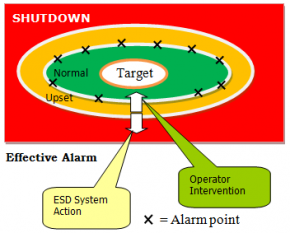Alarm system is a crucial component in automatically monitoring the plant condition and attracting the attention of the process operator to significant changes that require an action. Alarm must be fit for purpose to prevent potential financial and safety related losses, and is displayed within operator’s ability to respond properly.
What you get from AMS:
To maintain the plant within a safe operating envelope while improving availability. A good alarm system helps the operator to correct potentially dangerous situations before the ESD (Emergency Shutdown System) is force to intervene. This improves plant availability. It also reduces the demand rate on the ESD and thus increase plant safety.
To recognize and act to avoid hazardous situations. It is the role of the ESD system to intervene before a hazard arises. However, there may be cases, hopefully extremely infrequent, where the plant deviates outside its design conditions into a state where the ESD is no longer capable of acting effectively. Also there may be cases where operator action following an alarm has been explicitly identified within the plant Safety Cases as a measure of protection.
To identify deviations from desired operating conditions that could lead to financial loss such as off-specification or overly expensive product.
To better understand complex process conditions. Alarm should be an important diagnostic tool, and is one of several sources that an operator uses to react during an upset.


